Which Gods did the Ancient Romans worship?
The religious landscape of ancient Rome was as vast and complex as the empire itself.
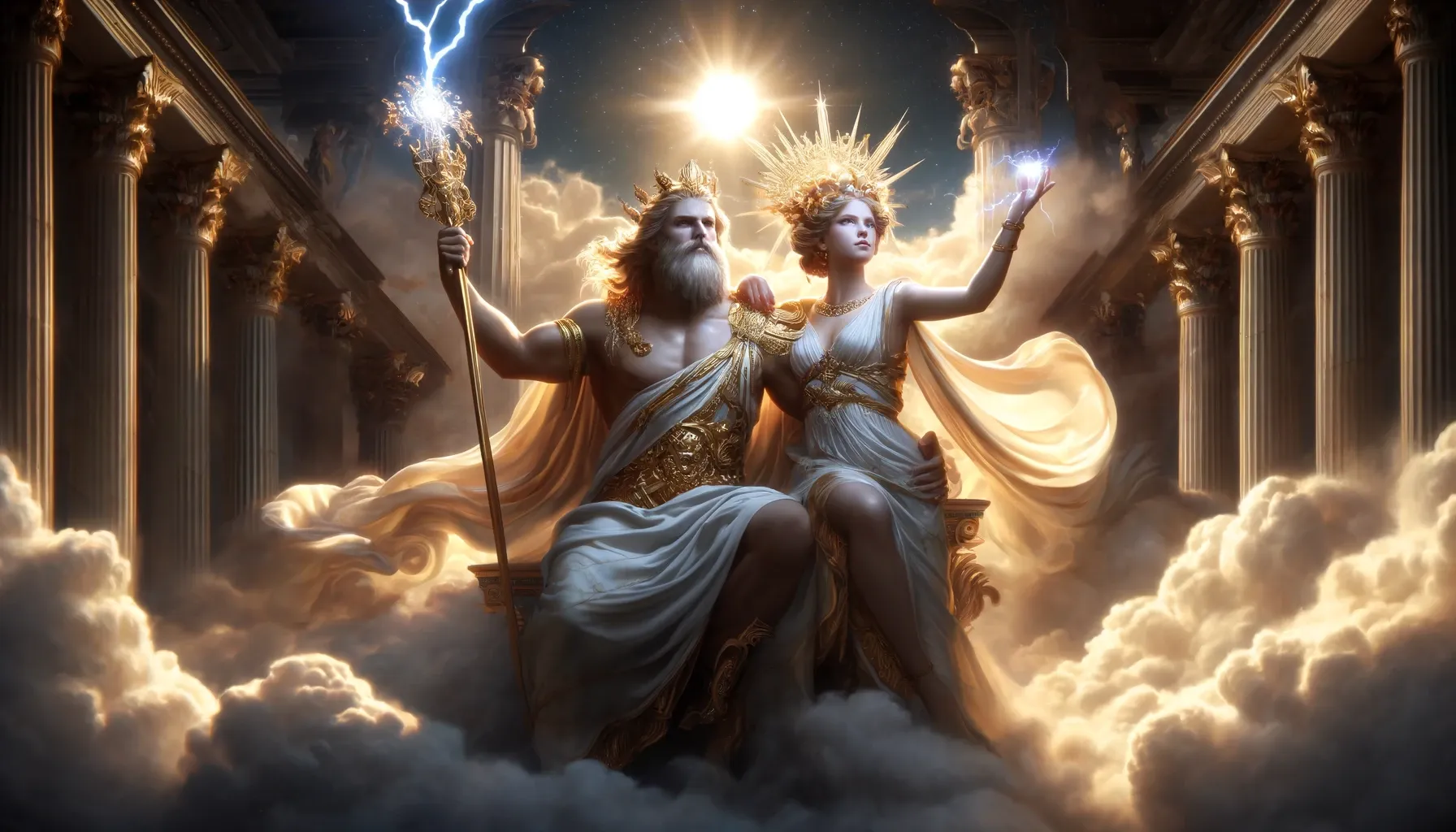
The religious landscape of ancient Rome was as vast and complex as the empire itself. Spanning a myriad of gods and goddesses, the Roman pantheon played a crucial role in the daily lives of its citizens, influencing everything from political decisions to personal conduct.
Rome's religion was deeply rooted in polytheism, encompassing a vast array of gods, minor deities, and protective spirits that had a hand in virtually all facets of daily life. The pantheon was so extensive that Pliny the Elder, in his work Naturalis Historia wrote in the 1st century AD:
"the population of divine beings could be thought of as larger than that of humans"
The most recognized Roman deities today are those whom the Romans assimilated with Greek gods, adopting Greek stories, artistic motifs, and at times, rituals into their own culture. This integration permeated Latin literature, Roman art, and the everyday religious practices across the Empire.
However, many indigenous Roman gods remain lesser-known, identifiable only through their names and sometimes their roles, via inscriptions and texts that are often incomplete. This especially applies to the deities from Rome's ancient religion, dating back to the monarchical period, known as the "religion of Numa."
This ancient belief system, which either continued or was revitalized over time, includes gods with parallels in Italic or Etruscan mythology, as recognized by both ancient accounts and contemporary research. Across the Empire, local provincial deities were reinterpreted within the context of Roman religious frameworks, based on similarities in function or characteristics with Roman gods.
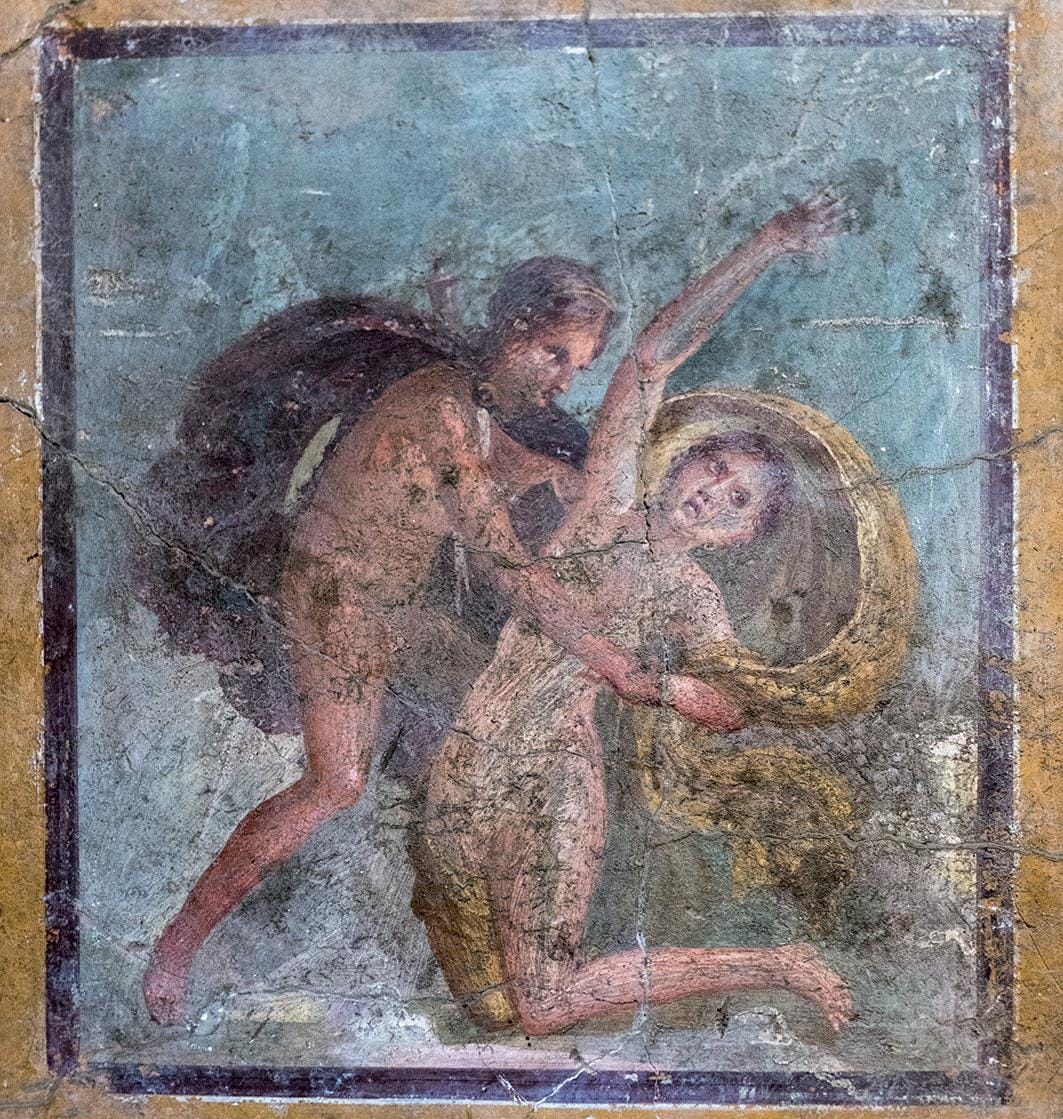
At the core of the Roman pantheon stood the Deii Consentes, a revered assembly of twelve gods and goddesses: Jupiter, Juno, Neptune, Minerva, Mars, Venus, Apollo, Diana, Vulcan, Vesta, Mercury, and Ceres. These deities paralleled the gods worshiped by the Greeks, with Jupiter as Rome's Zeus, Minerva as Athena, and Venus mirroring Aphrodite.
The Romans integrated these Greek deities into their own religious practices through a process called interpretatio romana, likely facilitated by interactions with the Greeks or through ties with other ethnic groups. For instance, the Etruscans venerated Menvra, akin to Minerva, and the Sabines honored Saturn, identifying him with Cronus, the Greek titan of time.
The Major Gods and Goddesses
The Capitoline Triad, consisting of Jupiter, Juno, and Minerva, was central to Rome's religious foundation. Jupiter, as the king of the gods, served as the protector of the Roman state and the ultimate authority on law and order. Juno, his sister and wife, was revered as the guardian of marriage and childbirth.
Minerva, Jupiter's daughter, was celebrated as the virgin goddess of warfare, poetry, medicine, wisdom, trade, and craftsmanship. Beyond the grand temple on the Capitoline Hill dedicated to them, each deity had individual temples scattered across the city. Minerva's sanctuary was located in the Forum Transitorium, while Jupiter and Juno were honored with separate temples within the Portico of Octavia.
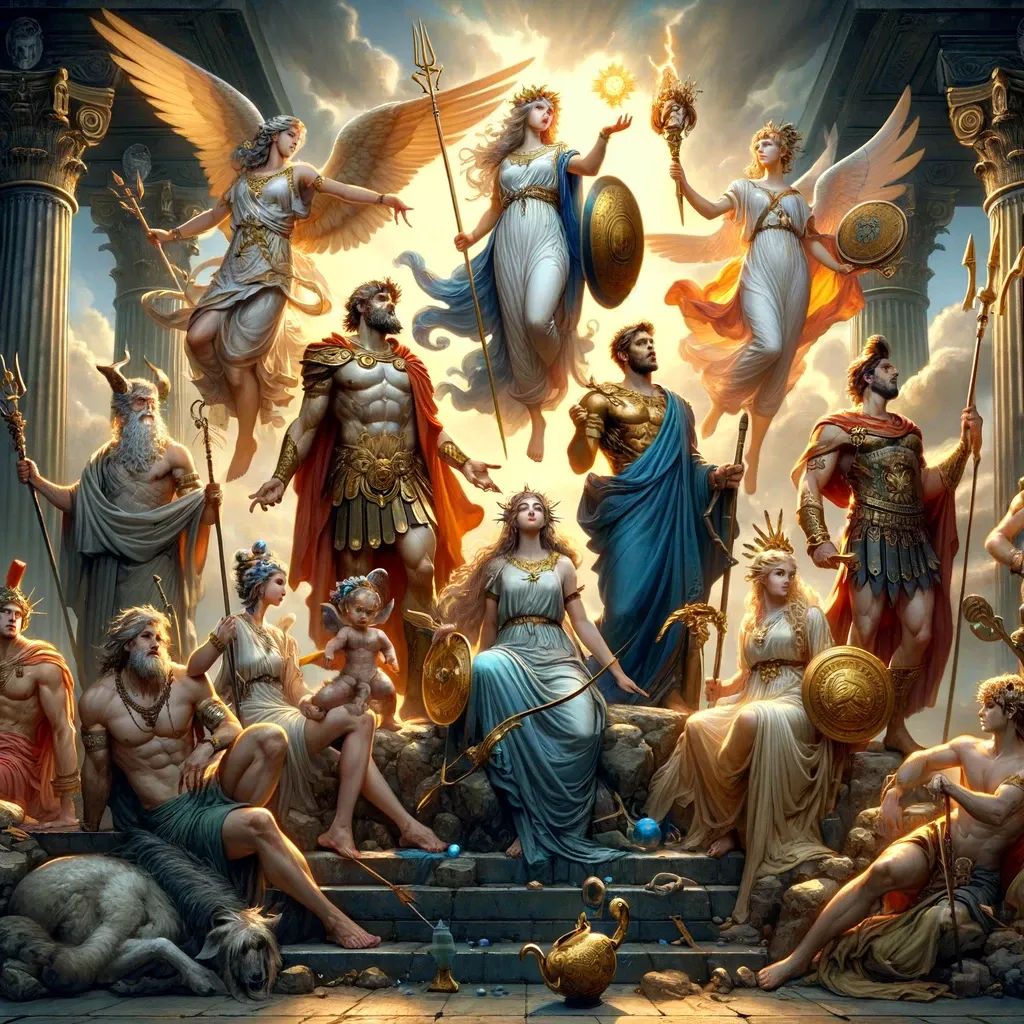
Within the Roman pantheon, certain deities held special significance for the city. Mars, offspring of Jupiter and Juno, served as a patron god, embodying war and also esteemed as the father of Romulus and Remus, the legendary founders of Rome. Venus, revered as the goddess of love and abundance, held a vital place in Roman reverence due to her son Aeneas, the Trojan hero linked to Rome's inception.
Temples dedicated to Venus were prominent in Rome's forums and even in the Theatre of Pompey. Her representation alongside Roma, symbolizing the city's spirit, in the grand Greek-style temple constructed by Hadrian near the Forum and the Colosseum, underscores her importance. The existence of numerous temples within Rome attests to the central role of these principal deities, with the Pantheon standing as a paramount edifice designed to honor the entire assembly of gods.
The main Ancient Roman Gods and their Greek names
Jupiter: (Zeus) The King of the Gods
At the pinnacle of the Roman pantheon stood Jupiter, the god of sky and thunder, akin to the Greek Zeus. Revered as the protector of the state and its laws, Jupiter was venerated at the magnificent Temple of Jupiter on the Capitoline Hill, the most sacred site in Rome.
Juno: (Hera) The Queen of the Gods
Juno, Jupiter's wife and sister, presided over marriage and childbirth, embodying the ideal of Roman womanhood. Her worship underscored the importance of family and social harmony within Roman society.
Neptune: (Poseidon) God of the sea
Brother of Jupiter, Pluto and Juno, Neptune was the god of the see, the hurricanes, the earthquakes and the horses. He is often presented as an older man with white beard and hair holding a trident and riding a chariot that is pulled by horses.
Minerva: (Athena) Goddess of Wisdom
Part of the Capitoline Triad with Jupiter and Juno, Minerva was the goddess of wisdom, arts, and warfare. She was especially revered by craftspeople and scholars, representing the intellectual and creative achievements of Rome.
Mars: (Ares) God of War
Mars, the father of Rome's mythical founders Romulus and Remus, was more than just a war deity. As a symbol of military might, he also safeguarded agriculture, a testament to Rome's agrarian roots and the duality of creation and destruction.
Apollo: God of music, truth and healing
Son of Jupiter and Latona, twin of Diana. The only God who kept his Greek name in the Roman religion.
Venus: (Aphrodite) Goddess of Love
The mother of Aeneas, the progenitor of the Roman people, Venus was celebrated not only as the goddess of love and beauty but also as a symbol of Rome's imperial destiny.
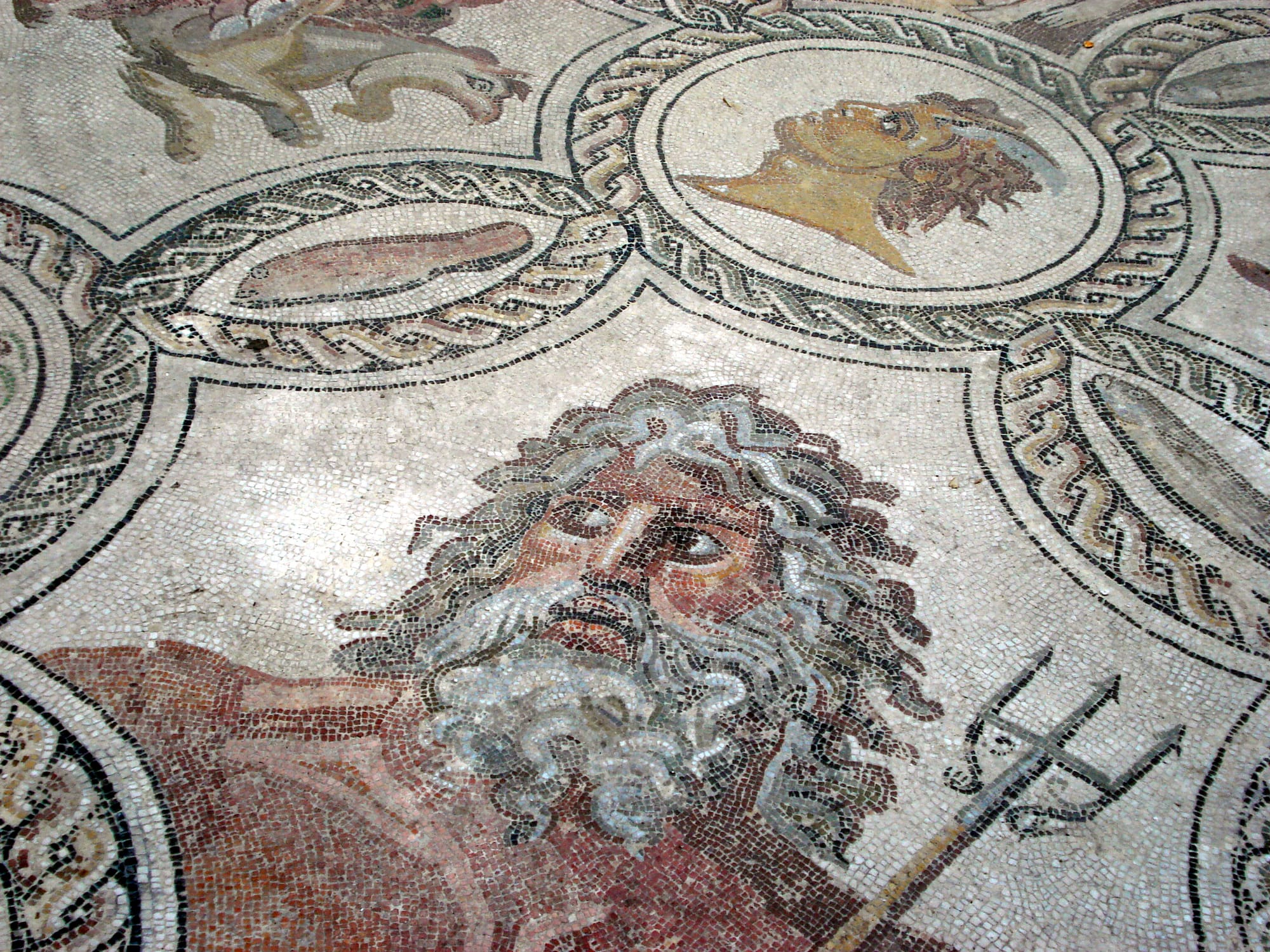
Diana: (Artemis) Goddess of hunting, birth and light
Daughter of Jupiter and Latona and twin of Apollo. To some Diana was also considered to be goddess of the poor, the lower classes especially slaves, for whom her festival on the Ides of August in Rome and Aricia was also a holiday.
Vulcan: (Hephaestus) God of fire, maker of the God’s weapons, god of metal and work
In certain myths, Vulcan was expelled from the heavens during his childhood due to a physical imperfection. Concealed within a volcano, he mastered his craft.
As retribution for being exiled, Vulcan crafted a snare for Juno, his mother. To secure Juno's release, his father, Jupiter, promised Venus's hand in marriage to Vulcan. Legend has it that Vulcan's workshop was situated beneath Mount Etna, and the volcano's eruptions were believed to signal Venus's infidelity.
Given his association with devastating fire, Vulcan's shrines were often strategically placed outside city boundaries.
Vesta: (Hestia) Goddess of the house and the family
A daughter of Saturn and Ops and sister to Jupiter, Juno, Neptune and Pluto. Vesta was embodied in the eternal flame maintained by the Vestal Virgins, Rome's sole full-time female priesthood, within their sacred sanctuary.
Mercury: (Hermes) God of profit, communication, thieves and trade
Son of Maia and Jupiter. He is presented as having wings and carrying a purse. He was responsible for guiding the souls of the dead to the underworld.
Ceres: (Demetra) Goddess of agriculture, marriage, women, motherhood and grain
The daughter of Saturn and Ops. It was said that the season’s changed according to her moods, because in autumn and winter she was grieving her daughter’s Proserpina absence, due to the fact that she was obligated to live in the underworld with Pluto, after eating a pomegranate, the fruit of the underworld.
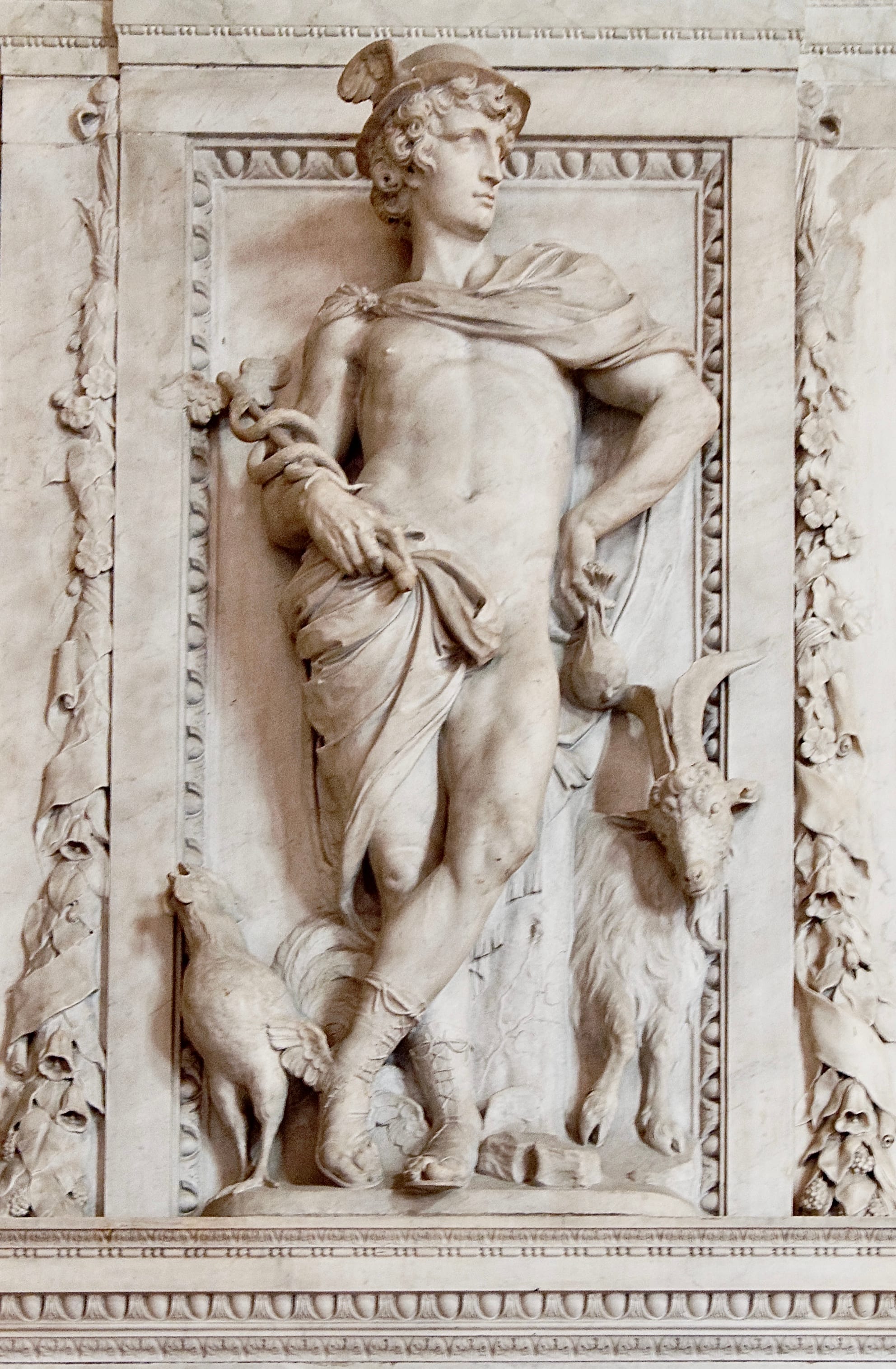
Lesser-Known Deities and Cults
Starting with Augustus's reign, the tradition of deifying emperors posthumously became commonplace. Prominent figures like Julius Caesar, Augustus, Claudius, Vespasian along with his son Titus, Trajan, and Hadrian were all deified and honored with their temples. During their lifetimes, these emperors were often considered to possess a semi-divine status, and upon their death, they were fully incorporated into the imperial cult and actively worshiped, not just in Rome but across the empire's provinces.
The city also hosted a plethora of other divine entities. For instance, the forum's shrine dedicated to Venus Cloacina represented a unique blend of Venus, the goddess of love, with Cloacina, an Etruscan deity associated with water sources. Additionally, the shrine of Janus Geminus was dedicated to Janus, the deity of beginnings, endings, and transitions, including doorways. This god's name is the origin of "January". The shrine's doors were ceremonially shut during peacetime, symbolizing peace throughout the realm. Although the physical shrine no longer exists, it was depicted on coins from Nero's era in the 60s AD, providing us with a glimpse into its historical significance.
Rome served as a melting pot for a plethora of exotic religious cults from the eastern Mediterranean, such as Greece, Turkey, Syria, and Egypt. Notable examples include Syrian cults and a Palmyrene sanctuary found across the Tiber in Trastevere, the Janiculum, and the Vatican, as well as near the commercial hub by the Aventine.
The cult of the Graeco-Egyptian fertility deities Isis and Serapis had a presence on the Campus Martius, with additional worship sites on the Aventine, Capitoline, and Quirinal hills. The cult of Mithras, with roots in Mesopotamia, emerged as the most influential of these imported religions, with over forty worship sites in Rome, including the Baths of Caracalla, the Circus Maximus, and the Praetorian Guard barracks.
Rome's eclectic religious landscape also showcased syncretism, blending major deities with counterparts from Egyptian and Near Eastern pantheons. An illustration of this is seen in the Forum of Augustus, where sculptures depict a fusion of Jupiter with Ammun, the chief of the Egyptian gods, symbolizing a blend of attributes associated with Zeus and Alexander the Great.
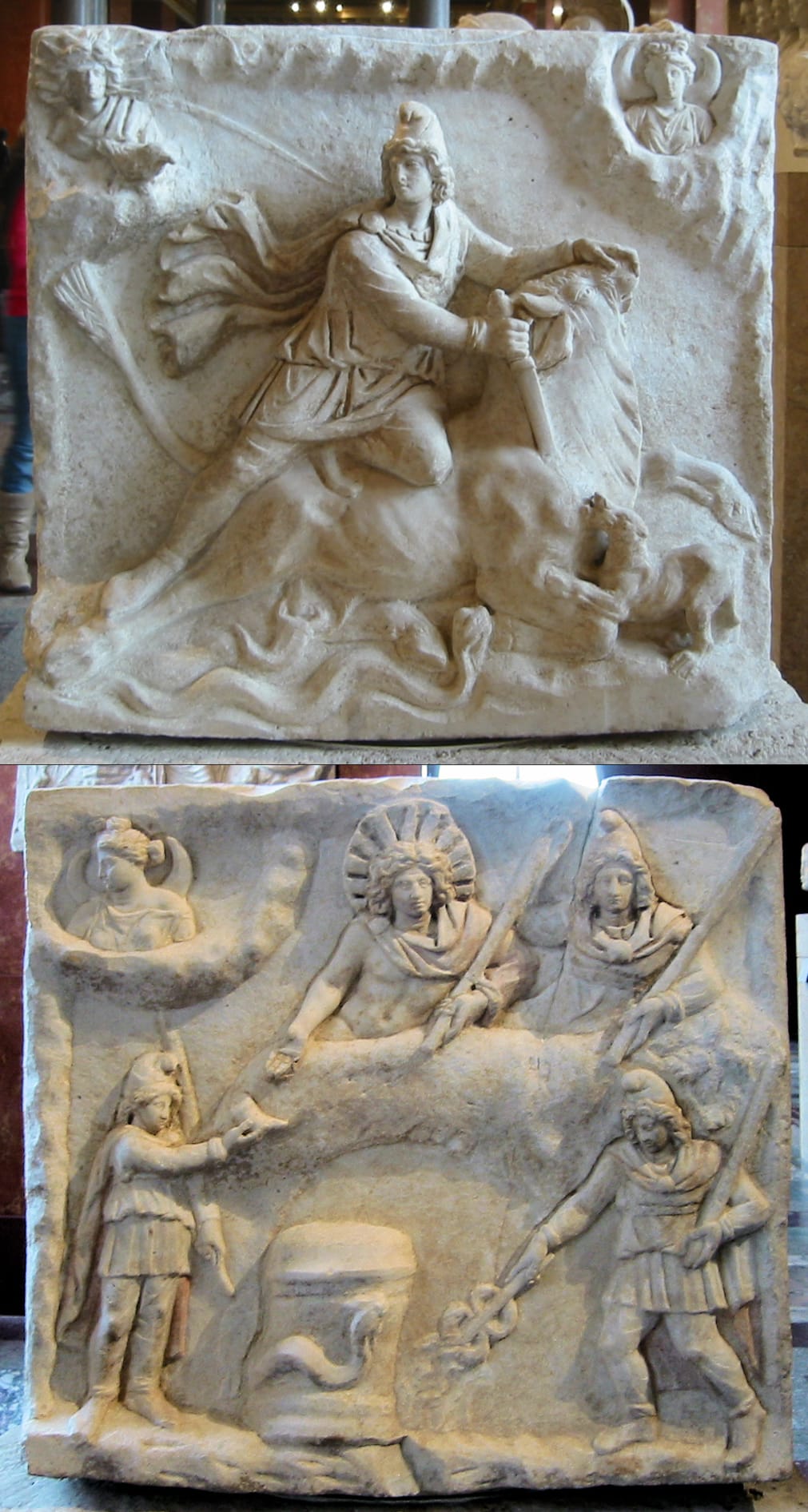
The introduction of new deities into Rome often had specific motivations behind it. For instance, the Greek god of healing, Asclepius (known in Rome as Aesculapius), was given a sanctuary on Tiber Island following a severe plague in 291 BC, in hopes that his divine intervention would rescue the city. Similarly, during periods of warfare and political turmoil, other gods were embraced for their supposed protective powers.
Cybele, the principal deity of Phrygia in Asia Minor, was brought to Rome during the Second Punic War in the late third century BC, in an effort to secure divine favor. She was later honored as Magna Mater (the Great Mother) and was allocated a temple on the esteemed Palatine Hill, signifying the significance of her worship in Roman society.
The remarkable religious diversity of Rome reflects both the city's cosmopolitan character and the vast geographical span of the Empire. Rome was generally tolerant of a wide array of religious practices, yet it targeted for persecution those faiths perceived as subversive or threatening to the political and social order. This intolerance partly explains the initial persecution and harsh suppression of Christianity, as its core monotheistic tenets clashed with Rome's polytheistic pagan traditions and the notion of the emperor's semi-divine status.
Constantine's Edict of Toleration in 313 AD, followed by his eventual conversion to Christianity, dramatically transformed Rome's religious landscape, marking the decline of its pagan roots. This shift, aside from a few brief pagan resurgences in the fourth century, paved the way for the construction of Christian churches and basilicas, moving away from the city's previously pagan architectural endeavors.
The Arch of Constantine might subtly allude to this significant religious transition. Despite these changes that evolved gradually before gaining official acknowledgment, the polytheistic heritage of Rome remained so profound that Augustine, a Christian theologian from the late fourth and early fifth century AD, lamented the challenge of encapsulating the vast array of deities in a single text, mirroring earlier sentiments expressed by Pliny:
“How can I possibly record in just one section of one book the names of all the gods and goddesses?”
Augustine, The City of God 4.8





About the Roman Empire Times
See all the latest news for the Roman Empire, ancient Roman historical facts, anecdotes from Roman Times and stories from the Empire at romanempiretimes.com. Contact our newsroom to report an update or send your story, photos and videos. Follow RET on Google News, Flipboard and subscribe here to our daily email.
Follow the Roman Empire Times on social media: